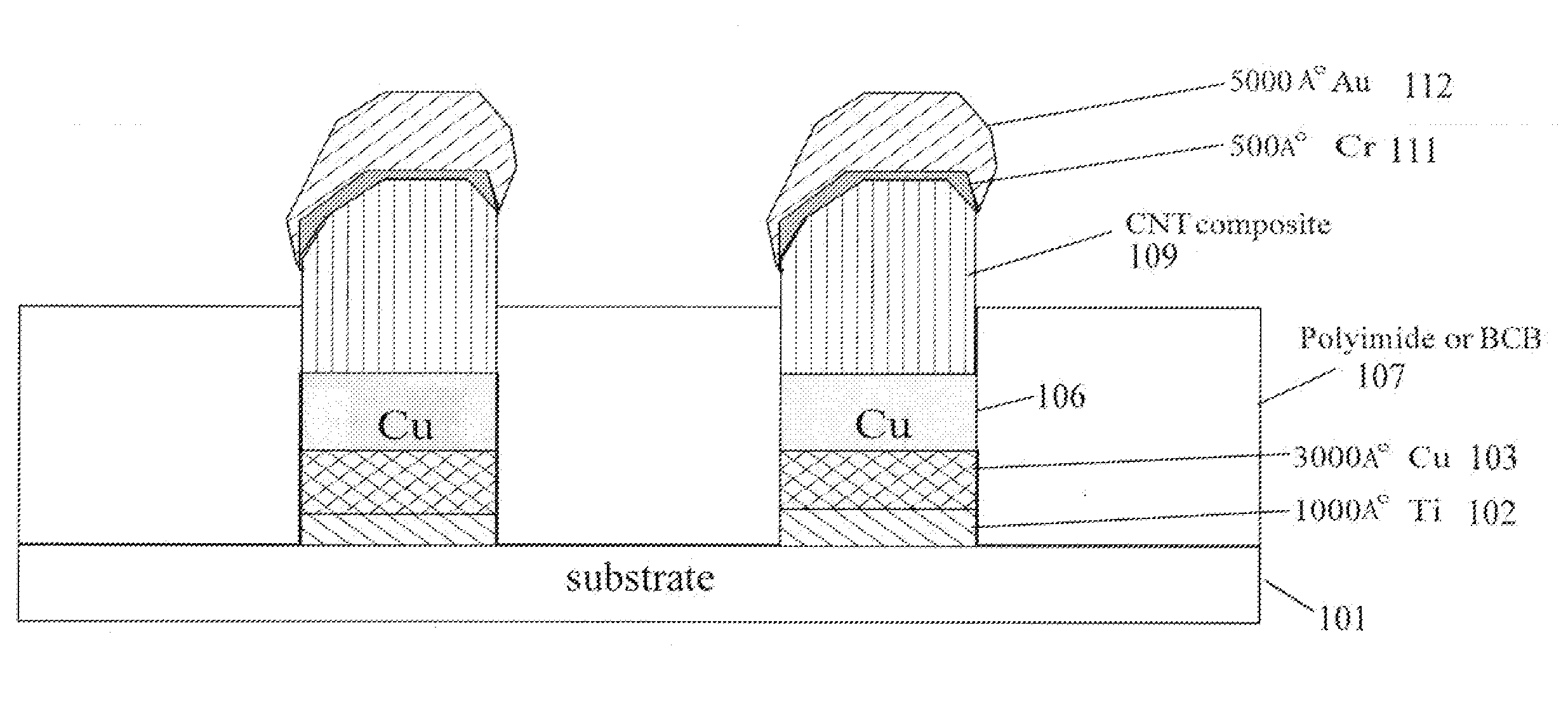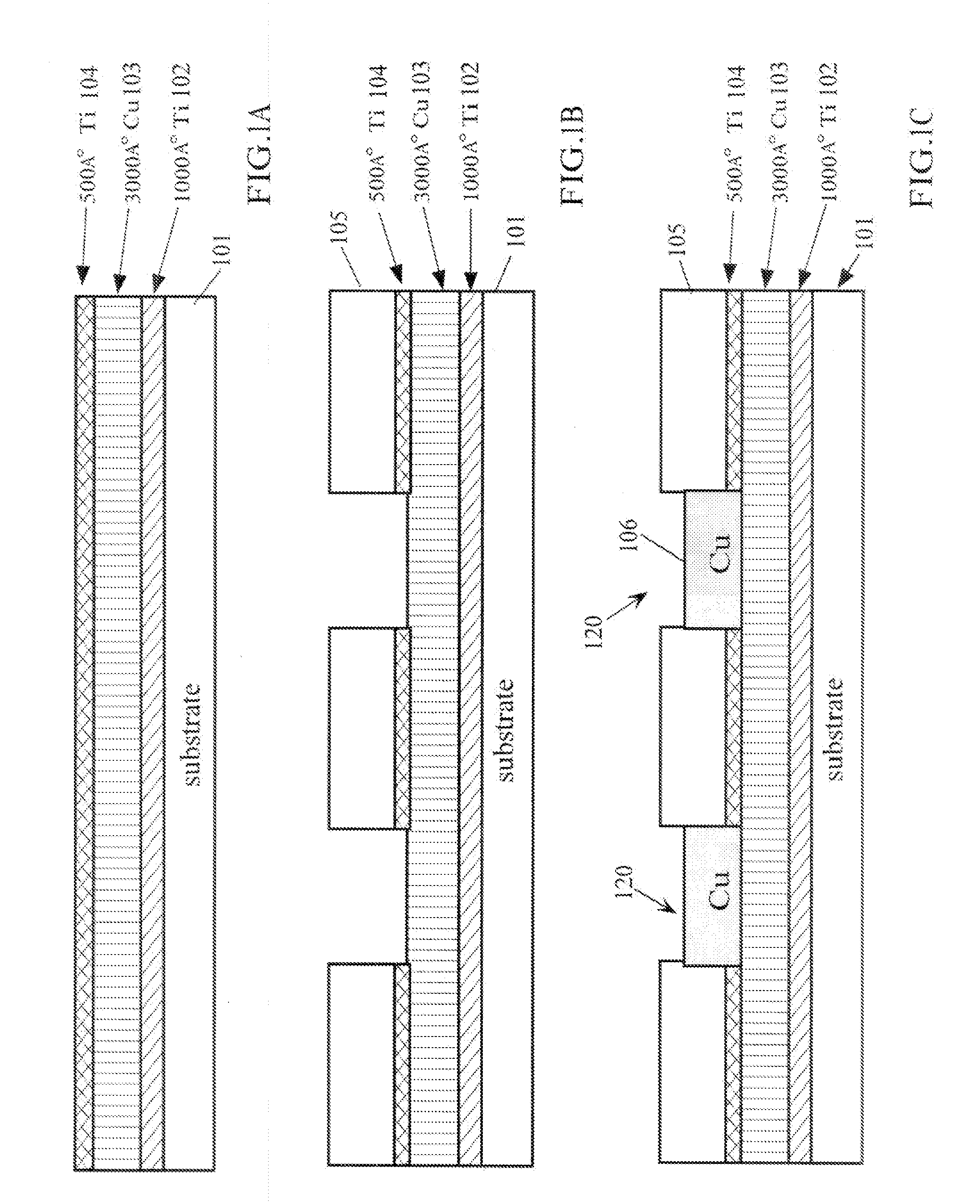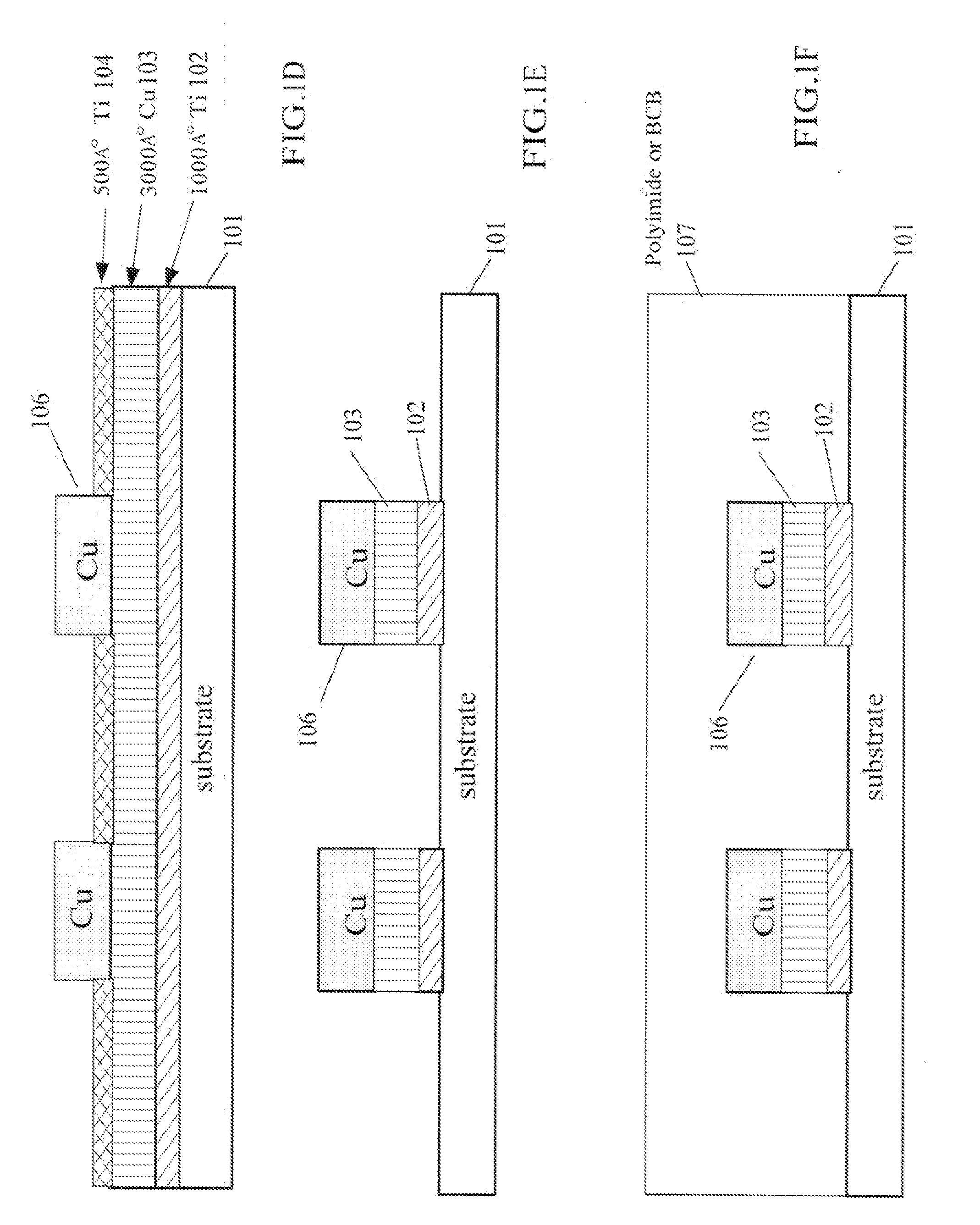Compliant Bumps for Integrated Circuits Using Carbon Nanotubes
a technology of integrated circuits and carbon nanotubes, which is applied in the direction of electrical equipment, semiconductor devices, semiconductor/solid-state device details, etc., can solve the problems of lowering the amplification capabilities of amplifiers, high-frequency, high-power amplifiers, etc., and presenting a host of problems for circuit designers
- Summary
- Abstract
- Description
- Claims
- Application Information
AI Technical Summary
Problems solved by technology
Method used
Image
Examples
Embodiment Construction
[0006]U.S. Pat. No. 5,508,228, hereby incorporated by reference, describes electrically connective complaint bumps for an adhesive flip chip integrated circuit device and methods for making the same. The compliant bumps are advantageous over traditional flip chip connectors, such as solid metal bumps, that can lose electrical contact between two integrated circuits for a variety of reasons, such as gross delamination and tensile stress cracking. Furthermore, solid metal bumps suffer from adhesive creep-relaxation. In addition, the coefficient of thermal expansion of a solid metal bump is typically much lower than that of the adhesive that holds the flip chip device in contact with the substrate. As the flip chip increases in temperature, therefore, the adhesive expands faster than does the bump. This causes the flip chip to separate from the substrate. This thermal expansion, consequently, opens the circuit between the flip chip and substrate and electrical conductivity is sacrifice...
PUM
 Login to View More
Login to View More Abstract
Description
Claims
Application Information
 Login to View More
Login to View More - R&D
- Intellectual Property
- Life Sciences
- Materials
- Tech Scout
- Unparalleled Data Quality
- Higher Quality Content
- 60% Fewer Hallucinations
Browse by: Latest US Patents, China's latest patents, Technical Efficacy Thesaurus, Application Domain, Technology Topic, Popular Technical Reports.
© 2025 PatSnap. All rights reserved.Legal|Privacy policy|Modern Slavery Act Transparency Statement|Sitemap|About US| Contact US: help@patsnap.com



